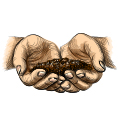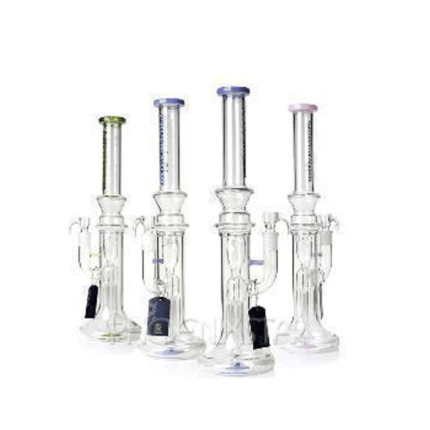Durban Dew – Dutch Passion
DP – Durban Dew strain is one that is famous and appreciated by connoisseurs. It has a high yield, and the high of this strain is very original. Some say it is almost intoxicating. Get used to hearing, “That’s really powerful!” The Durban Dew is the perfect strain for every grower who wants to minimize the stink factor. It is famed for being sweet and really sticky, like candy floss. It has a long-lasting euphoric feeling and a cozy body high with a sedative effect. The effect lasts for about 1.5 hours.
Durban cannabis cultivars are primarily landraces from Durban, South Africa, and have been cultivated and used for generations for their unique terpene profile that primarily consists of a high concentration of alpha terpinolene. Durban Dew is flagship hybrid strains as it was selected to produce a variety of THC and CBD rich strains with their delightful terpene profile and medicinal effects. The Durban Dew cannabis strain has many roles and can provide relief to many conditions. We feel that describing the terpene profile and examining the characteristics of its production would be a useful contribution to the cannabis genetics and chemistry fields.
DP – Durban Dew is originally bred by a well-known seed bank, Dutch Passion. This seed bank belongs to the world’s best when it comes to finding interesting new strains and cultivating different phenotypes. Durban Dew has been tested and confirmed as highly potent. It is a two-time cup winner and, therefore, a strain of world pedigree. Dew comes from a family ‘landrace’ and mixes sweet and fruity terpenes, berry terpenes, and cherry terpenes in its profile. The smell emanating from these terpenes is almost earthy and fresh fruit and reminiscent of a fairytale garden, in the opinion of most people who have already discovered the smell of the buds. The medicinal properties are useful to trigger the same sensations. It is an endorphin bomb, sometimes giving a blissed-out feeling to the one consuming it alongside other therapeutic applications.
Effects, Flavor And Aroma
DP – Durban Dew sets itself apart by its slightly uncommon sweet and citrusy taste resembling the aromas of the famous classic of Durban. It has quite a particular touch that makes it unique! Its flavor encompasses a range that goes from spicy thyme touches to a background of fruity cherries and bitter lemons. From just inhaling the bouquet of scents and flavors of Durban Dew, it becomes quite evident how its parent genetics were a South African landrace Durban and Skunk. If you are fond of sweet and citrusy aromas and flavors, then you will consider Durban Dew a true pleasure.
Effects: DP – Durban Dew is a sativa hybrid that focuses on producing high intensity and effects. The Durban Dew weed strain feels more like a middle-aged strain, as most smokers prefer to start slow, as it carries quite a punch that many people need to get used to. Once they do, they may experience a flooding type of high over their mind and body that provides great therapeutic value in terms of physical relief. Durban Dew offers a THC-rich experience, with a significant CBD concentration.
The onset of the high begins in the mind of the smoker, who experiences a flood of stimulating feelings. The consumer may feel more awake, excited, and locked into an engaging mindset, with substantial feelings of happiness and energy in the brain that make them feel more joyful and positive. This becomes evident in the smoker’s desire to speak more, entertaining random tangents and conversing well in social situations. A surge of energy overtakes them, allowing for a great deal of enthusiasm before the peak effects of the strain.
Growing Durban Dew
The characteristics of the DP – Durban Dew strain are sativa dominant, likely 70%, and thus you understand that the plants will exhibit the growth characteristics of a sativa-type plant when growing your plants indoors or outdoors. The growth patterns, flowering time, and possible yields will be helpful in understanding where to place your Durban Dew plants.
Indoor growing can be your best bet if you are looking to maximize your floor use for growing cannabis plants, want privacy, odor control, and security, and want to have or adjust your lighting sequences. Indoor growing may provide the opportunity to keep these plants in your own personal comfort zone. One of the most promising ways to increase the yield of cannabis plants is a sufficient increase in the intensity and duration of light. The main semiconductor light source used in commercial greenhouses is still the high-pressure sodium lamps. However, research on crops in controlled greenhouses and indoor cannabis cultivation has shown that an increase in the photosynthetic photon flux density broadens and enhances the green spectrum without compromising crop photosynthesis or morphology. Two improvements are viewed as commercially viable: two-spectrum HPS luminaires and full-spectrum electric light sources based on white LED grow light.
Outdoor growth, as people often state, is what must be done. This, of course, is up to the individual grower, but there are several good reasons that enter into the outdoor decision-making process. Some of these reasons include the quality of sunlight, which is certainly a key reason. Outdoor sun has a reputation for developing full and healthy plants. The UV light contained in outdoor sun can create not only a greater resin production on the plant but also an increased THC content, creating slightly stronger DP – Durban Dew. In that order, the increased yield of flowers can be considered as well.
To maximize the potential yields of DP – Durban Dew, there are multiple cannabis cultivation techniques that force a plant to grow short and stocky, stimulating bigger yields from what would otherwise be a plant with many small, secondary flowers. The development of the cannabis plant structure and presence of many leaf faucets can make lighting the plant difficult. The idea for maximizing photons, airflow, and nutrients to these multiple bud sites is to modify the plant growth pattern by opening up and bending the branches, allowing light, CO2, and air to enter and be released more efficiently. A bushy, open plant canopy fosters a structural openness that encourages better bud production and separation of flowers. Defoliating, as in removing the fan leaves that block the bud sites, is a good practice up to the third or fourth week into the flowering cycle. The goal is to keep the secondary bud sites active and open for as long as possible to stimulate bigger yields. The intensity of the light is also a factor. If growers maximize the plant’s potential in all of these areas, they are able to elicit amazing yields from even a single plant.
One of the best cannabis cultivation techniques for multiple bud sites is training. The idea behind this training is to support the development of multiple bud sites via plant training methods and at the same time force each bud site to develop into a cola instead of producing many smaller flowers. The end result of careful implementation is a robust mesh of small, dense buds that visually blurs together to form a homogeneous appearance that appears to cover the entire surface of the growing area. Large plants or a lot of smaller plants can be included in the same grow. The idea is to put the plants and the light through a vegetative growth stage that will promote exponential floral stretch and branching. A large, open structure is needed to support the mass of buds and maintain efficient light and airflow once a short outdoor flowering period is induced.
Cannabis is a unique plant. Cannabis is photosensitive, so when its light exposure is altered, it responds in a specific way. With the alteration of the light scheduling, the cannabis sensory structure is cued to begin the production of flowers, which will eventually produce seeds. This is the response that we deliberately anticipate, and after taking decent care of the plant and drying, we will be able to harvest the ‘bud’ for consumption. Harvest starts when plant growth and power are stopped to encourage fruit and seed creation, by the visual and olfactory test, when we detect that plant power production has stopped and the flowering process is well watered and ready for harvest.











Reviews
There are no reviews yet.